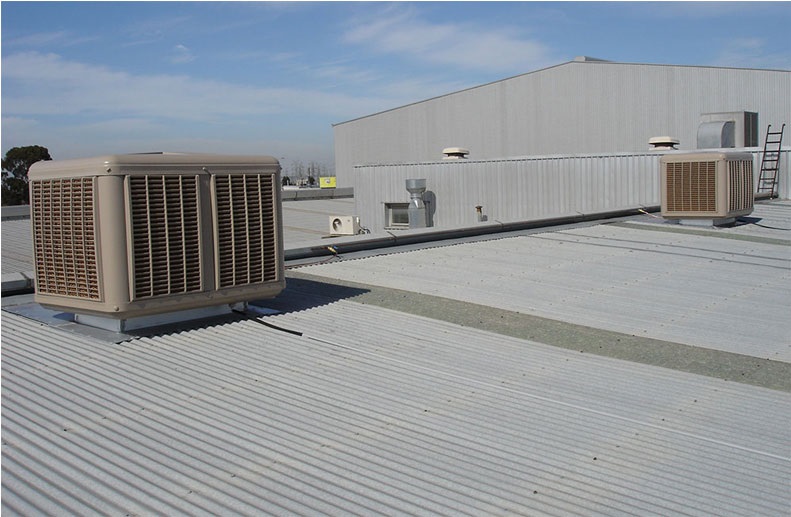Nowadays, industrial evaporative coolers are becoming increasingly popular as energy-efficient and environmentally friendly cooling solutions. Two primary types are commonly used within the realm of evaporative cooling: direct evaporative coolers and indirect evaporative coolers. While both types offer effective cooling capabilities, they operate using distinct methods. This article will explore the differences between direct and indirect evaporative coolers, their advantages, and their ideal applications.
How Direct Evaporative Coolers Work
Direct evaporative coolers, often called swamp coolers, work by harnessing the natural evaporation process. These coolers draw in hot, dry air from the outside environment and pass it through wet pads. As the air comes into contact with the moist pads, the water evaporates, resulting in a decrease in temperature. The now-cooled air is then circulated into the desired space, providing a refreshing and comfortable atmosphere.
Direct evaporative coolers are most effective in hot and dry climates with low humidity. They excel in arid regions, where evaporation efficiently cools the air without significantly increasing the humidity. Direct evaporative coolers are ideal for cooling large industrial spaces such as warehouses, factories, and workshops and can reduce temperatures by up to 30 degrees Fahrenheit.
Advantages of Direct Evaporative Coolers
Direct evaporative coolers offer several advantages over traditional air conditioning systems:
Cost Savings
The reduced energy consumption of direct evaporative coolers translates into significant cost savings on utility bills. These coolers are remarkably economical in regions with high electricity costs.
Fresh Air Circulation
Direct evaporative coolers continuously introduce fresh outside air into the space, promoting better ventilation and improving indoor air quality. The constant air circulation helps eliminate stale air and pollutants, creating a healthier working environment.
How Indirect Evaporative Coolers Differ
In contrast to direct evaporative coolers, indirect evaporative coolers employ a different approach to cooling. These coolers use a heat exchanger to separate the cooled air from the process air. The cooling of the process air occurs indirectly, without any direct contact with moisture. This allows for precise temperature control and humidity management. Indirect evaporative coolers are particularly suitable for environments where humidity control is crucial, such as data centers, laboratories, and facilities with sensitive equipment.
Benefits of Indirect Evaporative Coolers
Indirect evaporative coolers offer several benefits for specific applications:
Precise Temperature Control
Indirect evaporative coolers can achieve precise temperature control, allowing customization to specific cooling requirements.
Humidity Management
Indirect evaporative coolers do not add moisture to the cooled air, making them suitable for environments where humidity levels must be carefully regulated.
Conclusion
In conclusion, industrial evaporative coolers are an excellent alternative to traditional air conditioning systems. They offer energy-efficient cooling, lower operating costs, and improved air quality. Understanding the difference between direct and indirect evaporative coolers is crucial in selecting the right cooling solution for your needs. Whether you require a straightforward cooling method for hot and dry climates or precise temperature and humidity control for specialized environments, an evaporative cooler option will suit your requirements. Embrace the benefits of evaporative cooling and create a comfortable and efficient workspace for your industrial needs.
